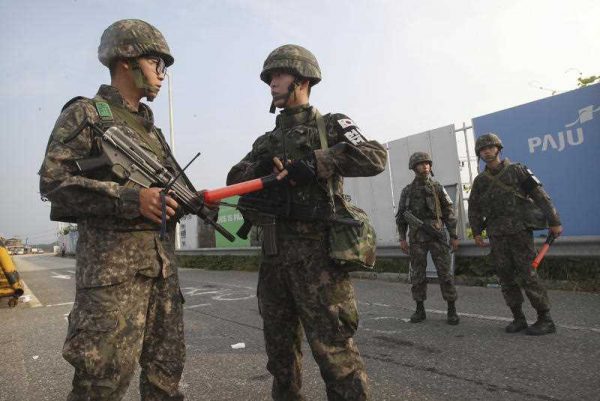Throughout the three days of the Panmunjom negotiations, South Korea’s main aim was to have North Korea acknowledge its responsibility and apologise for the landmine incident. North Korea initially denied responsibility while persistently requesting the suspension of the loudspeaker broadcasts. Both sides eventually compromised, with Pyongyang expressing ‘regret’ over the landmine incident. Seoul interpreted this as an ‘acceptable apology’ and agreed to stop all loudspeaker broadcasts in the border area.
The 8.25 inter-Korean agreement paves the way for the resumption of inter-Korean family reunions — as continuously requested by Seoul — as well as dialogue over resuming suspended economic cooperation projects and the possible lifting of the 24 May sanctions. These sanctions were imposed by Seoul after the sinking of the Cheonan in 2010, a South Korean naval vessel that Seoul maintains was sunk by a North Korean torpedo.
While it is too early to attach too much significance to the agreement, the manner in which Pyongyang expressed regret and agreed to family reunions without the promise of economic aid appears to herald a new dynamic in relations between Seoul and Pyongyang.
Pyongyang has long used brinkmanship involving military provocations towards South Korea and the international community. Such tactics are intended to maximise political leverage in negotiations. In the past, this has proven successful in terms of securing economic and humanitarian aid from the South, effectively rewarding North Korea’s provocations. Subsequent agreements are easily broken because North Korea’s promises to cease provocations are usually just a means to gaining immediate economic benefits or to overcoming political difficulty at that moment.
Until recently, South Korea has failed to secure a strong deterrence against future North Korean provocations. But in order to break this vicious circle, the Park Geun-hye government has pledged not to tolerate such behaviours, instead strongly demanding that Pyongyang apologise and refrain from provocations.
Amid the recent inter-Korean military tensions, Pyongyang’s move to place its military forces on high alert and declare front-line areas to be in a ‘quasi-state of war’ were regarded by Seoul as typical of North Korea’s brinkmanship tactics. Yet despite these military threats, Park maintained a tough posture by warning of a strong retaliation against North Korea and by ignoring Pyongyang’s threat that it would launch strong military action if South Korea didn’t halt its anti-North Korean broadcasts within 48 hours. Meanwhile, South Korea also offered the chance to defuse tensions through dialogue with North Korea. Just one hour before the deadline ended, the situation dramatically changed when Pyongyang changed course and proposed bilateral talks with Seoul.
The loudspeaker broadcasts served as a critical factor this time to bring North Korean to the negotiation table and to compromise with the South. Recent events and the subsequent inter-Korean deal have provided an important lesson for South Korea: that Seoul possesses a strong deterrent against North Korea’s provocations in the option to resume loudspeaker broadcasts if Pyongyang undertakes provocations again.
North Korea’s leadership appears to fear that the propaganda broadcasts will demoralise North Korean soldiers, and citizens living close to the border, and eventually weaken their loyalty to the regime. Broadcasts have delivered messages about North Korea’s alleged mismanagement of governance, human rights abuses and the superiority of the South Korean political system. They were not only critical of the North Korean regime but also contained international news reports, K-pop music and weather forecasts. Broadcasting international news could make both front line troops and neighbouring citizens realise North Korea’s international isolation, while the latest South Korean pop music and accurate weather forecasts intend to instil positive images of South Korean society.
By both reserving the right to employ propaganda broadcasts as ‘sticks’ and at the same time assuming a flexible approach that signals openness for dialogue, President Park has adopted a strategy that may yield some results for inter-Korean relations. This time the Park Geun-hye government successfully maintained a tough policy toward the North by demonstrating that Pyongyang could pay a heavy price for its future provocations. At the same time, inter-Korean projects will serve as ‘carrots’ for North Korea to gain economic benefits when it co-operates.
The outcome of the 8.25 agreement remains to be seen. Now is a crucial time for President Park to maintain a tough but flexible approach to North Korea that could help to promote South Korea’s agenda of improving inter-Korean relations.
Sangsoo Lee is a research fellow at the Institute for Security and Development Policy (ISDP) in Sweden and a visiting researcher at the Northeast-Asia Institute, Peking University.


In what sense are propaganda broadcasts ‘secret’??